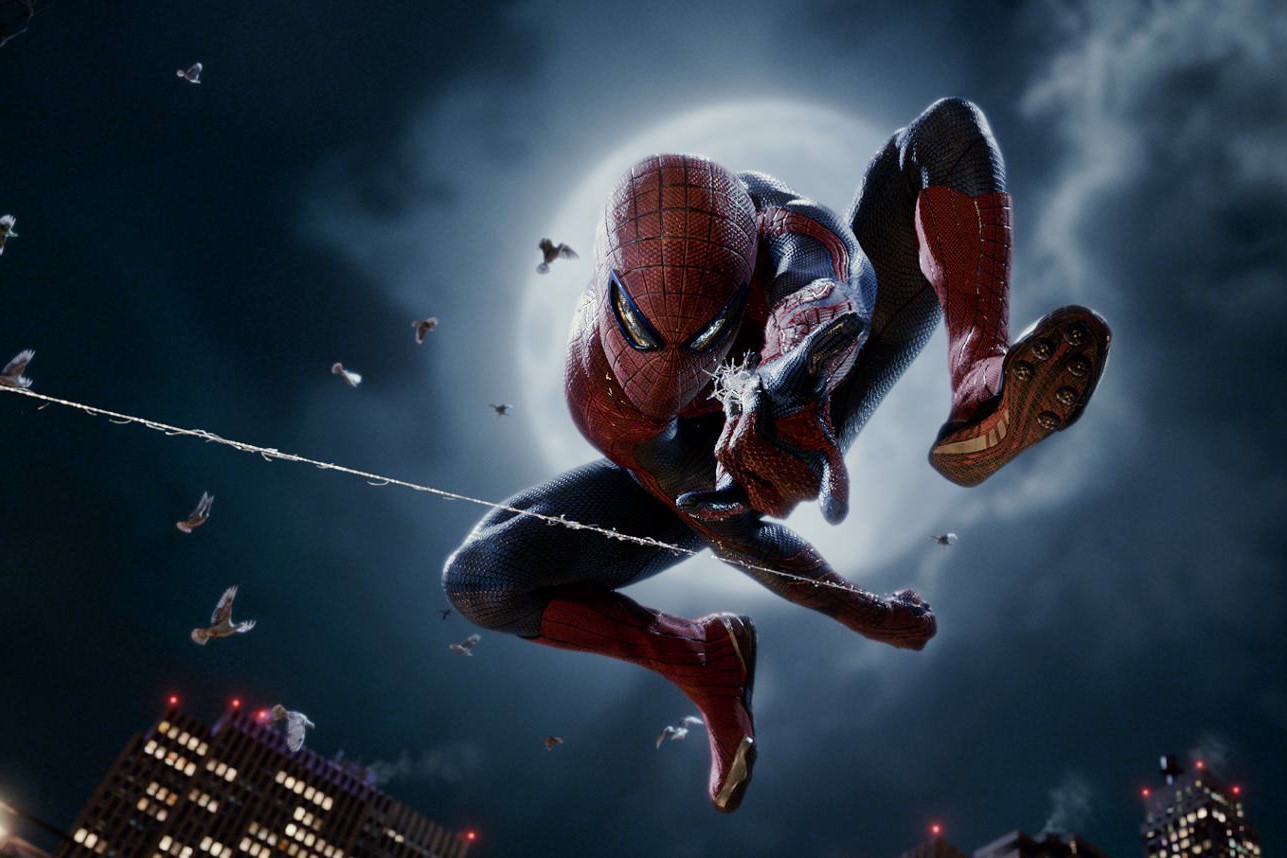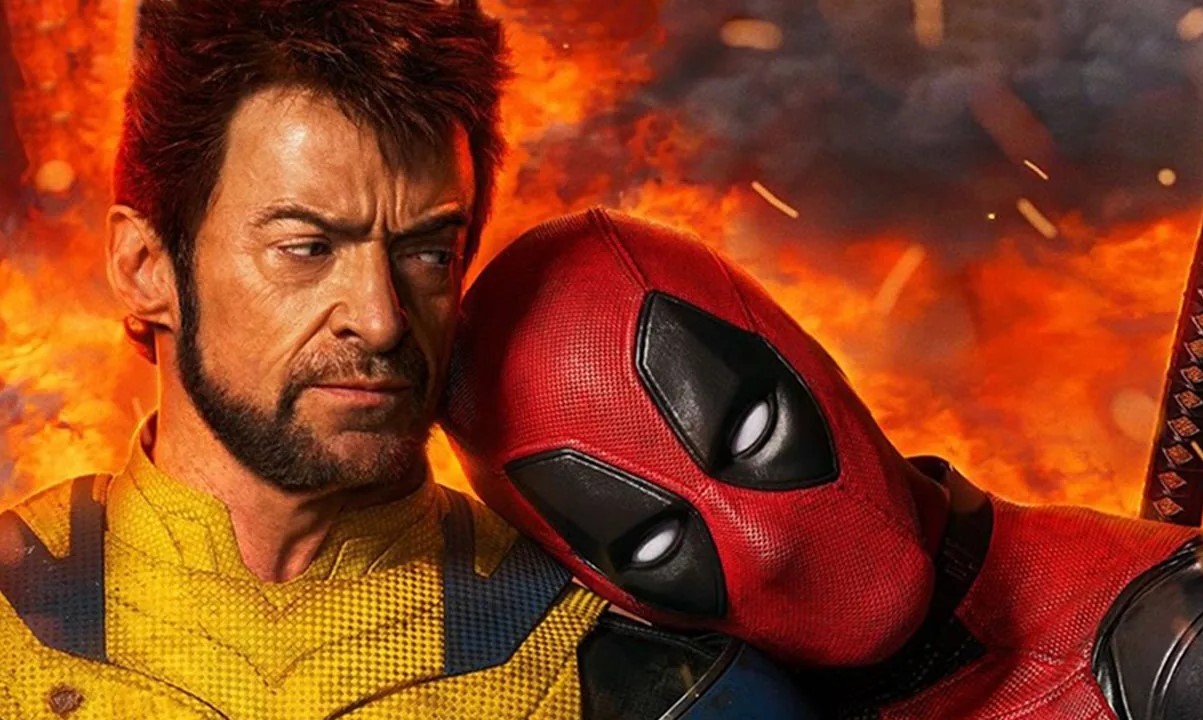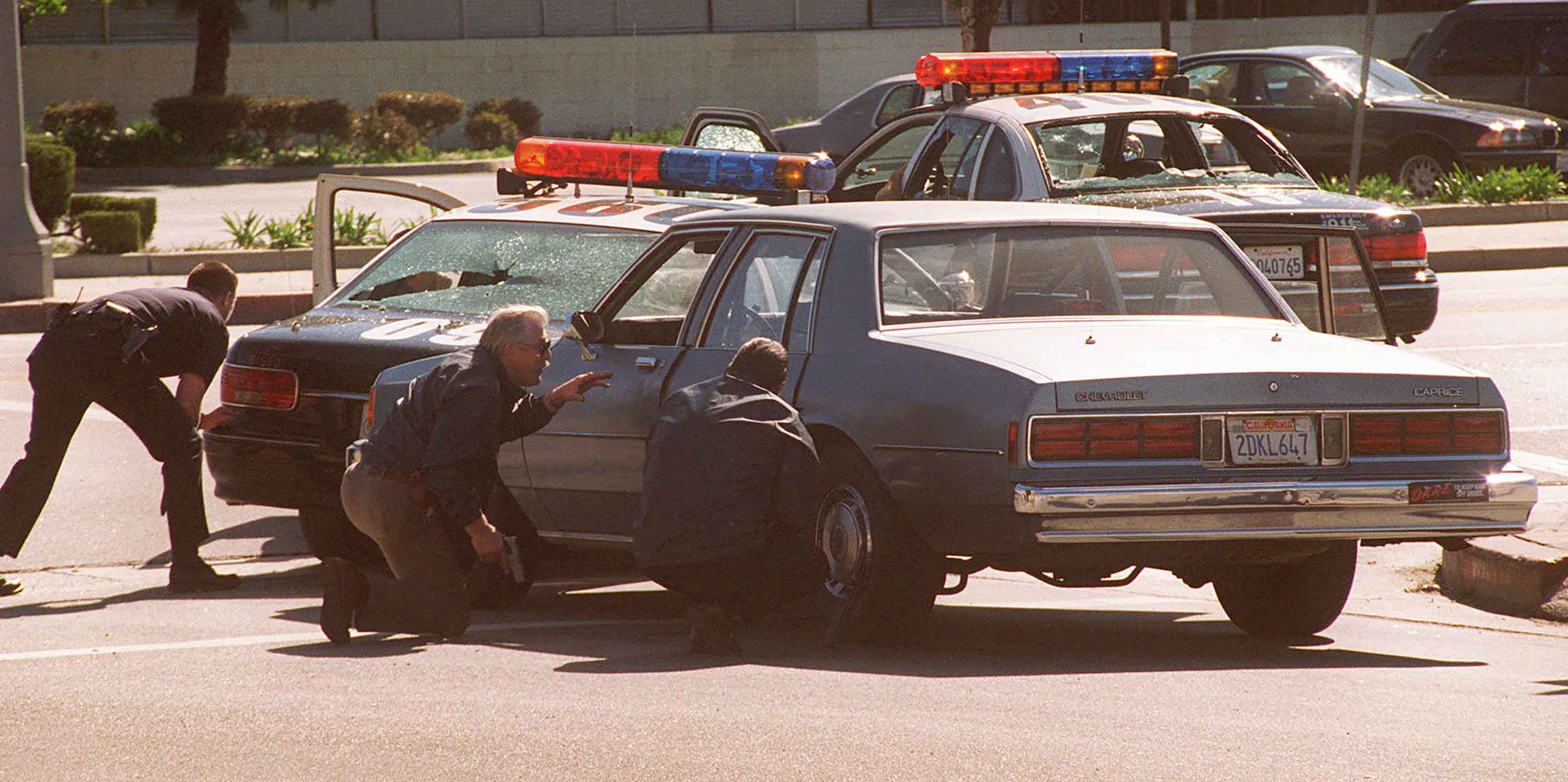
Ever wondered what makes "The Amazing Spider-Man" so special? Released in 2012 and directed by Marc Webb, this reboot of the Spider-Man series dives deep into Peter Parker's origin story. Andrew Garfield steps into the iconic role, bringing a fresh take on the beloved superhero. From the unique creation of Spider-Man by Stan Lee and Steve Ditko to the intricate details of the film's production, there's a lot to uncover. Did you know Spider-Man was the first teenage superhero not to be a sidekick? Or that Andrew Garfield shed tears the first time he wore the Spider-Man costume? Let's swing into 50 intriguing facts about this film that reshaped the Spider-Man legacy.
Key Takeaways:
- Spider-Man's creation, unique aspects, and connections to the Marvel Universe are fascinating. The movie's production, memorable scenes, and challenges provide insight into its impact and legacy.
- Andrew Garfield's dedication, physical preparation, and challenges faced by the movie reveal the depth of Spider-Man's story and the impact of The Amazing Spider-Man on the franchise.
The Origins and Creation of Spider-Man
The Amazing Spider-Man, directed by Marc Webb and released in 2012, rebooted the Spider-Man film series. This movie dives deep into Peter Parker's origin story, played by Andrew Garfield, and his transformation into the iconic superhero Spider-Man. Here are some fascinating facts about the movie, its production, and its impact on the Spider-Man franchise.
-
Creation and Debut: Spider-Man was created by Stan Lee and Steve Ditko and debuted in Amazing Fantasy #15 in August 1962.
-
Initial Rejection: Martin Goodman, Marvel's head at the time, initially rejected the concept of Spider-Man due to people's aversion to spiders.
-
Original Concept: Stan Lee initially considered using a fly or insect as the base for the character before settling on a spider.
-
First Teenage Hero: Spider-Man was the first teenage superhero not to be a sidekick of an adult hero.
-
Quips and Distractions: Spider-Man's quick-witted remarks during battles serve both to distract villains and help him relax and avoid fear.
Unique Aspects of Spider-Man
Spider-Man's character has several unique aspects that set him apart from other superheroes. From his name to his web-shooters, these details make Spider-Man a distinctive and beloved character.
-
Name Hyphenation: Stan Lee placed a hyphen in Spider-Man's name to prevent it from being confused with Superman, who was very popular at the time.
-
First Solo Title: The Amazing Spider-Man (Vol. 1) first appeared on shelves in March 1963, marking Spider-Man's first solo title.
-
Volume 1 Conclusion: The first volume of The Amazing Spider-Man ended in December 2012 with its 700th issue, with plans to reach 1,000 issues.
-
First Villain: The Chameleon was Spider-Man's first villain, debuting in The Amazing Spider-Man (Vol. 1) #1.
-
Main Enemies: Spider-Man's main enemies include the Green Goblin, Doctor Octopus, Venom, and the Lizard, among others.
Connections to the Marvel Universe
Spider-Man's story is deeply intertwined with the larger Marvel Universe. Here are some interesting connections and crossovers.
-
Civil War Connection: During Marvel’s Civil War, Tony Stark created the Spider-Armor for Peter Parker, but he abandoned it when he joined Captain America.
-
MCU Involvement: Tom Holland was confirmed to play Spider-Man in the Marvel Cinematic Universe (MCU), with more than just a cameo in the movie.
-
Non-Origin Story: The first Spider-Man movie in the MCU was confirmed not to be an origin story, focusing on an existing Spider-Man.
Behind the Scenes of The Amazing Spider-Man
The production of The Amazing Spider-Man involved many interesting behind-the-scenes details, from costume design to casting choices.
-
Organic Web Shooters: In Sam Raimi’s Spider-Man movies, Spider-Man had organic web shooters, which were later retconned by One More Day.
-
Toby Maguire’s Suit: Toby Maguire insisted on a Spider-Man suit that allowed him to use the restroom without taking it off and going through the long refitting process.
-
Andrew Garfield’s Suggestion: Andrew Garfield suggested a pansexual Spider-Man at one point for a live-action film, but it was not pursued.
-
Total Cartoons: There have been a total of eight Spider-Man cartoons, including the 1967 and 1981 series, as well as Spider-Man and His Amazing Friends.
-
Peter Parker’s Exploration: Peter heads to Oscorp to explore his father’s shadowy past, arriving at the Oscorp Tower, a dizzying structure.
Memorable Scenes and Plot Points
The Amazing Spider-Man is filled with memorable scenes and plot points that have left a lasting impact on fans.
-
Crane Operators’ Help: The crane operators of New York band together to help Spidey out, placing their cranes in position to create a quick route to Oscorp, showcasing patriotism and teamwork.
-
Secret Identity: Peter frequently reveals his secret identity to people he rescues, including a young kid, Gwen, Captain Stacy, and possibly even Aunt May.
-
Mutation Symptoms: The days after Peter’s bite are marked by wooziness, enhanced senses, and the stomach-turning moment when he pulls a silky thread from his neck to reveal the spider still embedded in his flesh.
-
Dinner Disagreement: Peter butts heads with Captain Stacy over the motivations of the new vigilante swinging through New York, with Gwen looking uncomfortable as the discussion turns aggressive.
-
Lizard’s Transformation: Dr. Connors holds his arm up in front of a pane of glass, the mirrored reflection restoring its missing twin, a visually striking image that inspires sympathy for the doctor.
-
Spider-Man’s Identity: After rescuing a small child from a fiery death, Peter is asked by the kid’s father who he is, and he replies, “I’m Spider-Man”.
-
Lizard’s Appearance: Dr. Connors emerges from the sewers, his transformation having occurred before he could remove his white lab coat, revealing the Lizard in his traditional comic-book attire.
Production and Employment
The making of The Amazing Spider-Man was a massive undertaking, employing hundreds of people and occupying multiple stages.
-
Noticeboard: At the end of the film, the camera pans across Peter’s noticeboard, where the police sketch of the man who killed his uncle remains front and centre, hinting at more to come in the hunt for the killer.
-
Subway Takedown: A newly sticky-handed Peter accidentally strips a fellow commuter down to her underwear, much to the chagrin of her boyfriend and his loutish mates, before wiping the floor with them and sheepishly retreating from the carriage.
-
Employment Numbers: The Amazing Spider-Man employed over 1,000 people, with the film’s sets occupying seven stages at Sony Studios’ Culver City lot.
-
First Words Spoken: The first words spoken in the film are young Peter Parker counting backwards while playing Hide-and-Seek: “Four…three…two…one!” This is a wink-at-the-audience reference to the film taking the audience back to the beginning of Spider-Man’s story.
-
Music Features: The film features the song “‘Til Kingdom Come” by Coldplay, which appears during a skateboarding scene. Coldplay also collaborated with The Chainsmokers on “Something Just Like This,” which mentions Spider-Man in one of its lyrics.
Characters and Casting Choices
The casting choices and character portrayals in The Amazing Spider-Man added depth and nuance to the story.
-
Captain Stacy’s Appearance: Captain George Stacy (Denis Leary) does not appear in the film until 53 minutes in, over a third of the movie.
-
Main Villain Costume: The main villain of every first Spider-Man movie in different franchises (Tobey’s, Andrew’s, and Tom’s) has a green costume or green skin (Green Goblin, Lizard, Vulture).
-
ISBN Mistake: The ISBN on the back cover of Curt Connors’ book, ‘Splice of Life: Breakthroughs in Cross-Species Genetics,’ that Peter is reading is actually the ISBN for ‘A Certain Justice: Adam Dalgliesh Mysteries’ by PD James.
-
Ultimate Spider-Man Elements: The film noticeably borrows story elements from the first seven issues of the Ultimate Spider-Man series, including Spider-Man’s mutation being connected to OsCorp and battling the villain in his school after discovering his secret identity.
-
Josh Hutcherson’s Audition: Josh Hutcherson, famous for his role as Peeta in The Hunger Games, auditioned for the role of Peter Parker in The Amazing Spider-Man series.
-
Gwen Stacy’s Role: Gwen Stacy serves as Dr. Connors’ lead intern at OsCorp, and Emma Stone went on lab field trips with Rhys Ifans. The two actors spent one trip observing scientific research on axolotl regeneration, which are salamanders famous for their ability to re-grow limbs and even portions of the brain and spine.
Andrew Garfield's Dedication
Andrew Garfield's dedication to the role of Spider-Man is evident in his emotional response and physical preparation.
-
Andrew Garfield’s Emotional Response: Andrew Garfield, a lifelong fan of Spider-Man, admitted to shedding tears the first time he wore the Spider-Man costume. A total of 56 Spider-Man costumes were created for the movie, with 17 made for Andrew Garfield and the rest for stunt persons.
-
Mice Toys: The mice used in the Oscorp Lab were actually toys. A total of 200 mouse toys were used for the movie, each with their unnaturally pink-colored ears removed.
-
50th Anniversary: 2012 marks the 50th anniversary of Spider-Man. The classic Marvel comic book character made his debut in Issue #15 of the anthology series Amazing Fantasy (August 1962). Amazing Fantasy ended with this issue, and Spider-Man’s adventures continued in a new series, The Amazing Spider-Man, beginning in 1963.
-
Behind-the-Scenes Details: The franchise was meant to be massive, as it was Sony’s answer to the Marvel Cinematic Universe (MCU). Marc Webb was brought on board to launch this new Spiderverse, which would have led to a host of other movies, including The Sinister Six and Venom.
Challenges and Changes
The Amazing Spider-Man faced several challenges and changes during its production and release, impacting its reception and future plans.
-
Box Office Returns: The box-office returns for the two movies weren’t as amazing as Sony expected. The second movie received a lot of criticism for being overstuffed and unfocused. The famous Sony leaks didn’t help matters, so Sony pulled the plug on the franchise and rebooted with Marvel’s assistance, casting Tom Holland as the new Spidey.
-
Andrew Garfield’s Struggles: Andrew Garfield, who portrayed Peter Parker/Spider-Man in The Amazing Spider-Man movies, opened up about the struggles he experienced with the franchise. He felt that being part of such a large corporate enterprise was dangerous and compromised the story and character he loved.
-
Annie Parisse’s Scenes: Actress Annie Parisse, of Law & Order fame, was cast as Dr. Connors’ wife, while a young actor was cast as their son. Unfortunately, neither of them made the final cut of the movie. This would have added humanity to Dr. Connors’ character and shown his struggle with being a man and a creature.
-
Venom and Carnage Teasers: The Amazing Spider-Man 2 had a nifty promotional campaign for the movie, including a Tumblr account for the Daily Bugle. Some of the topics of the Bugle’s articles weren’t included in the final cut of the film, including a piece written by Eddie Brock (Venom) and Cletus Kasady (Carnage).
-
Mary Jane’s Scenes: Mary Jane Watson was actually cast and filmed for The Amazing Spider-Man 2. Actress Shailene Woodley portrayed MJ, but her scenes were eventually removed from the final cut.
Physical Preparation and Training
The physical preparation and training for the cast, especially Andrew Garfield, were intense and crucial for the film's success.
-
Personal Trainer: Andrew Garfield worked with personal trainer Armando Alarcon six days a week for six months to prepare for the role of Spider-Man. Garfield’s physical transformation was significant, reflecting the character’s growth and strength.
-
Emma Stone’s Portrayal: Emma Stone portrays Gwen Stacy, a key character in Spider-Man lore and Peter Parker’s first love. Gwen Stacy made her first appearance in The Amazing Spider-Man #31 (December 1965).
-
Set Occupancy: The film’s sets occupied seven stages at Sony Studios’ Culver City lot, employing over 1,000 people during production.
-
Physical Preparation: Andrew Garfield’s preparation for the role included intense physical training, which helped him achieve the necessary strength and agility for the character.
-
Legacy and Impact: The Amazing Spider-Man has left a lasting impact on the Spider-Man franchise, paving the way for future adaptations and reboots. Despite its mixed reception, it remains a significant chapter in the ongoing story of Peter Parker and his transformation into Spider-Man.
The Amazing Spider-Man's Lasting Impact
The Amazing Spider-Man, directed by Marc Webb and starring Andrew Garfield, brought a fresh take on Peter Parker's origin story. With its unique blend of action, emotion, and character development, the film offered a new perspective on the beloved superhero. From Garfield's heartfelt portrayal to the intricate details of production, every aspect contributed to its distinct identity within the Spider-Man franchise. Despite mixed reviews and box office challenges, the movie left an indelible mark, influencing future adaptations and reboots. Its legacy continues to resonate with fans, reminding us of Spider-Man's enduring appeal and the timeless nature of his story. Whether you're a longtime fan or new to the web-slinger’s adventures, The Amazing Spider-Man remains a significant chapter in the ongoing saga of Peter Parker.
Frequently Asked Questions
Was this page helpful?
Our commitment to delivering trustworthy and engaging content is at the heart of what we do. Each fact on our site is contributed by real users like you, bringing a wealth of diverse insights and information. To ensure the highest standards of accuracy and reliability, our dedicated editors meticulously review each submission. This process guarantees that the facts we share are not only fascinating but also credible. Trust in our commitment to quality and authenticity as you explore and learn with us.


